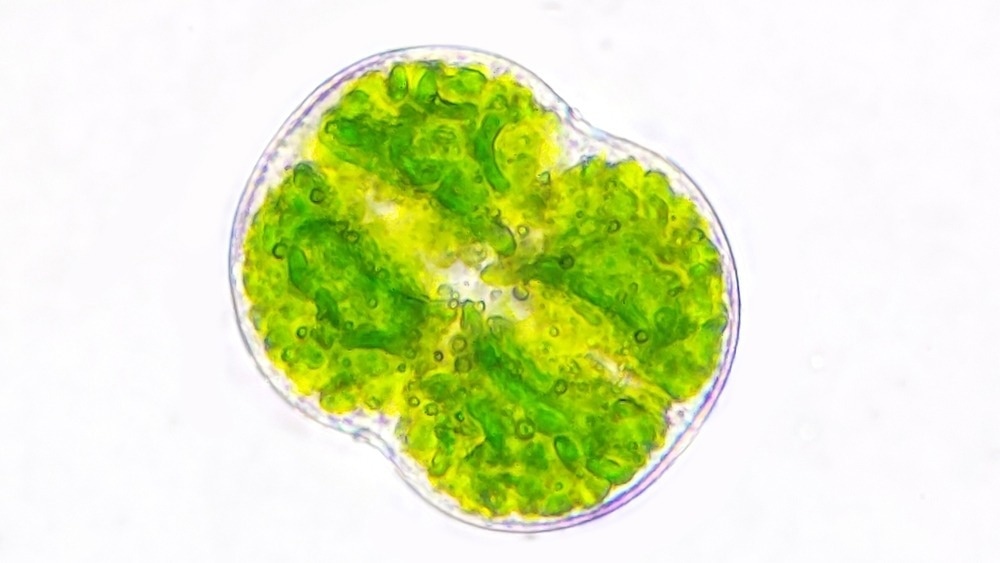Reviewed by Danielle Ellis, B.Sc.Nov 19 2024
A nice item in excess is not good at all. Living things prefer sunlight. In fact, they require it to survive, but they tend to shun excessively strong light. Humans take naps, animals seek refuge, and even plants have defenses against too much light.

Image Credit: Ekky Ilham/Shutterstock.com
However, how do single-celled, immobile organisms respond to excessively bright light? The unexpected solution has been found by researchers at the University of Amsterdam.
Avoiding Bright Light
Pyrocystis lunula is the full scientific name. Sailors and fishermen are well aware of the effects of P. lunula algae, which are single-celled organisms that can cause the sea to glow blue, even though they may not have heard of them.
Dinoflagellates are single-celled organisms that are unable to move on their own, like P. lunula. Its primary energy source is sunlight, which it transforms into chemical energy that may be used, much like plants do, through a structure called a chloroplast.
When exposed to excessively bright light, the plants in the environment employ a brilliant defense mechanism: their chloroplasts move around inside their cells and cover each other, allowing only the required quantity of light to enter and preventing cell damage, because P. lunula's chloroplasts are arranged in a complicated network, it is unable to employ the same tactic and must move in a different way to escape intense light.
Furthermore, unlike humans and animals, the algae cannot simply move away from the light. It has long been a scientific mystery how these species cope with high light. An enigma that has been resolved.
A Flexible Chloroplast
Biophysicists Nico Schramma, Gloria Casas Canales, and Maziyar Jalaal devised a creative method to investigate the precise effects of light exposure on P. lunula's chloroplast. After filming the cell and its chloroplast using microscopy, they used computer algorithms to match a network of nodes and edges to the intricate form of the cell.
By doing this in the presence of fluctuating light colors and intensities, they were able to track the actions of the cell's chloroplast precisely.
The chloroplast cannot avoid bright light, but it can lessen its impact by contracting, the researchers discovered. Within five minutes, the cell's chloroplast shrank to a ball and lost almost 40% of its size when exposed to intense white light, which is the brightness of a sunny afternoon. The chloroplast regained its previous size and form in half an hour when the illumination conditions were changed to dim red light.
A network of thin filaments was discovered to be the structure that enables the chloroplast to undergo these essential modifications. These strands combine to create a substance that readily expands and contracts in all directions.
The crucial element is “in all directions”; the majority of natural structures lack this characteristic. A lemon will become a disk-shaped item with a significant surface area when stepping on it, yet its height will drastically reduce, and its size will expand in other directions. This natural behavior is avoided by P. lunula.
Nature’s Hoberman Sphere
A Hoberman sphere, a design invented by Chuck Hoberman in 1988 and found in well-known children's toys, is somewhat comparable to the structure that enables the chloroplast to shrink in all directions.
In addition to biology, this insight links the physicists' research to mathematics, specifically topology and materials construction: Recently, a lot of research has been done on lab-made materials that exhibit the same unexpected qualities as the Hoberman sphere and the chloroplast of P. lunula.
These materials have been used for a variety of purposes, such as being “smart materials,” which drastically alter their characteristics in response to external stimuli. Unexpectedly, the ingenious solutions developed by physicists and engineers in the lab end up existing in living nature.
Sometimes, numerous answers and discoveries accompany the resolution of a single scientific inquiry. Regarding how P. lunula and other dinoflagellates escape bright light, this might very well be the case.
Its response not only provides additional information on this microscopic single-celled creature that occasionally causes the sea to glow blue, but it also teaches us about natural structures and how complex mathematics is used in them, as well as important lessons that can be used to create novel materials.
Source:
Journal reference:
Schramma, N., et al. (2024) Light-regulated chloroplast morphodynamics in a single-celled dinoflagellate. Proceedings of the National Academy of Sciences. doi.org/10.1073/pnas.2411725121.